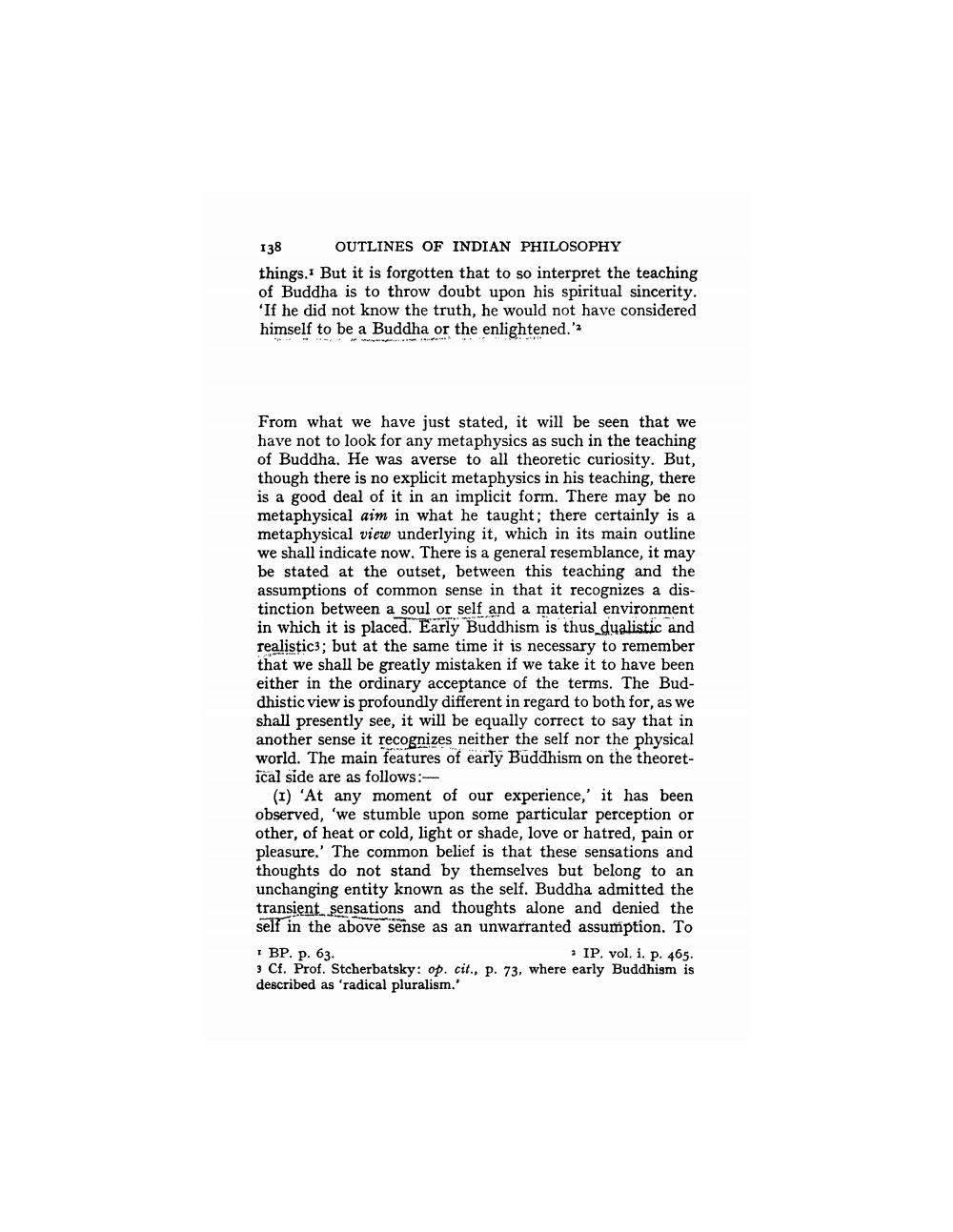________________
138 OUTLINES OF INDIAN PHILOSOPHY things. But it is forgotten that to so interpret the teaching of Buddha is to throw doubt upon his spiritual sincerity. 'If he did not know the truth, he would not have considered himself to be a Buddha or the enlightened.'
From what we have just stated, it will be seen that we have not to look for any metaphysics as such in the teaching of Buddha. He was averse to all theoretic curiosity. But, though there is no explicit metaphysics in his teaching, there is a good deal of it in an implicit form. There may be no metaphysical aim in what he taught; there certainly is a metaphysical view underlying it, which in its main outline we shall indicate now. There is a general resemblance, it may be stated at the outset, between this teaching and the assumptions of common sense in that it recognizes a distinction between a soul or self and a material environment in which it is placed. Early Buddhism is thus dualistic and realistic3; but at the same time it is necessary to remember that we shall be greatly mistaken if we take it to have been either in the ordinary acceptance of the terms. The Buddhistic view is profoundly different in regard to both for, as we shall presently see, it will be equally correct to say that in another sense it recognizes neither the self nor the physical world. The main features of early Buddhism on the theoretical side are as follows:
(1) 'At any moment of our experience, it has been observed, 'we stumble upon some particular perception or other, of heat or cold, light or shade, love or hatred, pain or pleasure.' The common belief is that these sensations and thoughts do not stand by themselves but belong to an unchanging entity known as the self. Buddha admitted the transient sensations and thoughts alone and denied the self in the above sense as an unwarranted assumption. To 1 BP. p. 63
IP. vol. i. p. 465. 3 Cf. Prof. Stcherbatsky: op. cit., p. 73, where early Buddhism is described as 'radical pluralism.'




